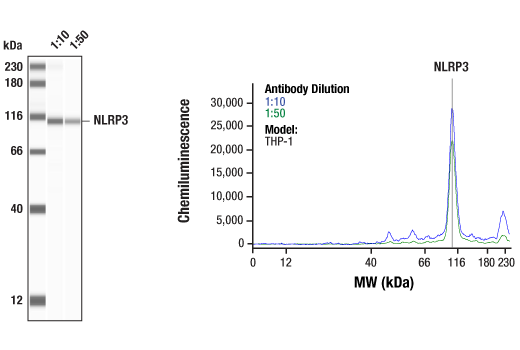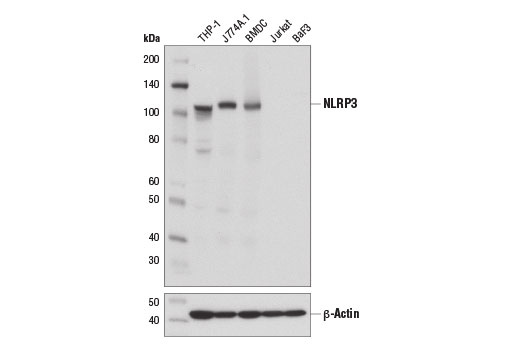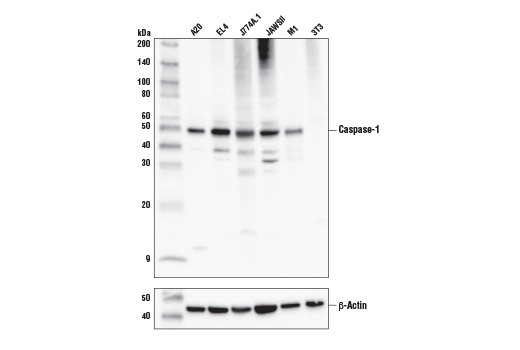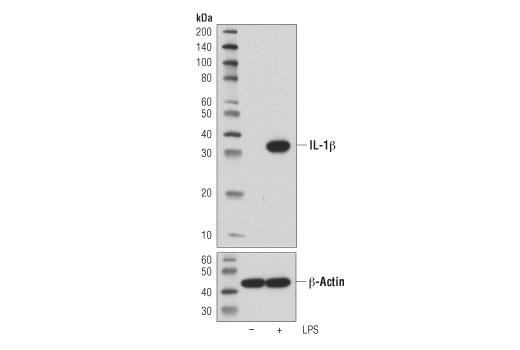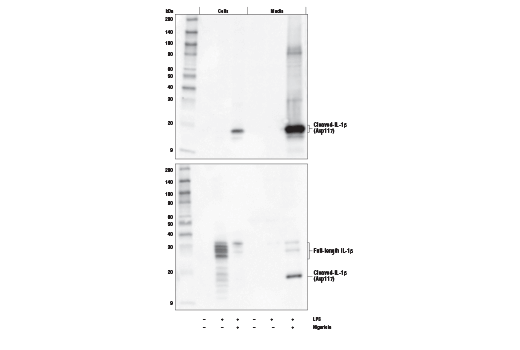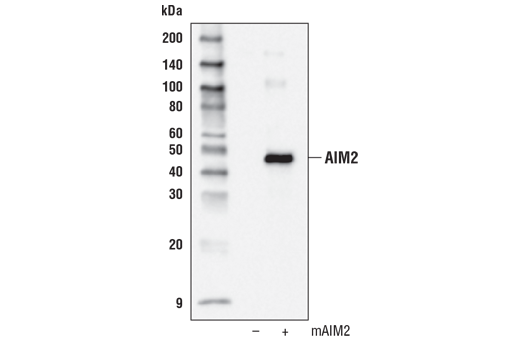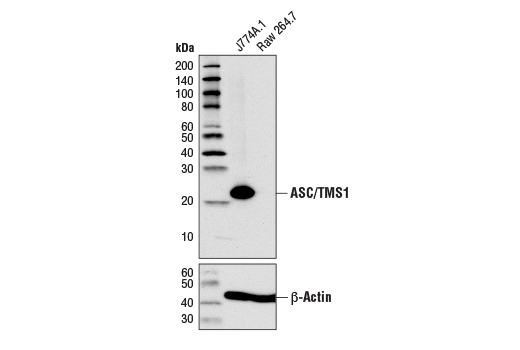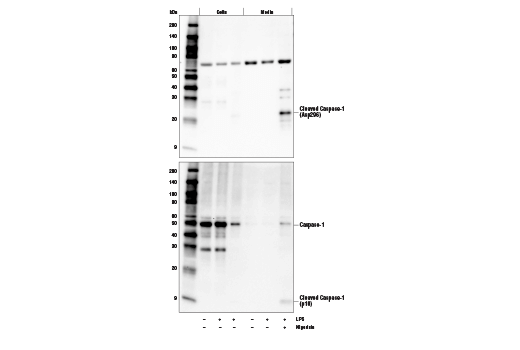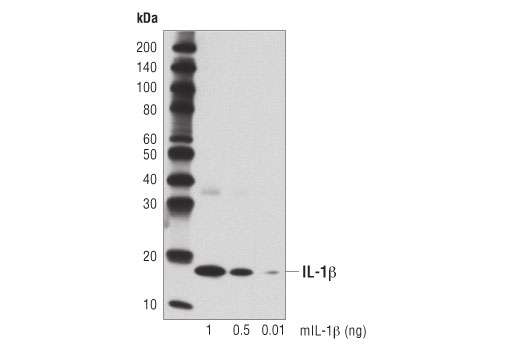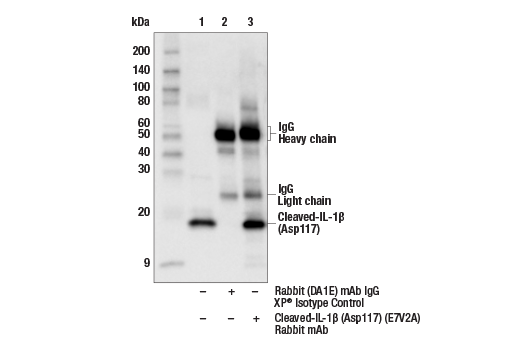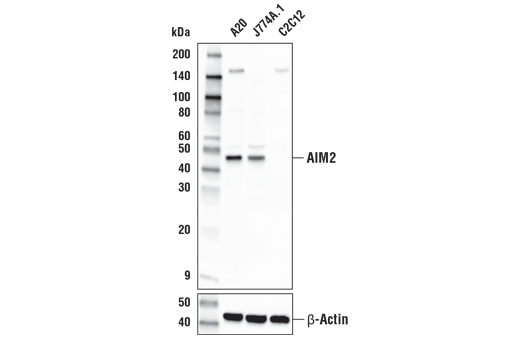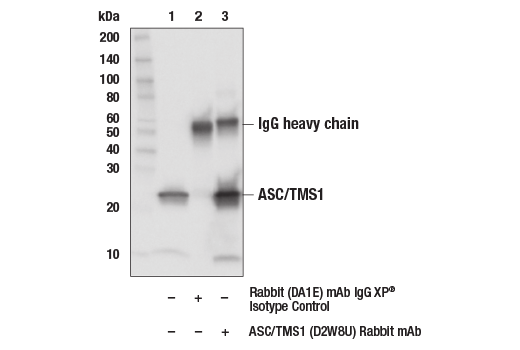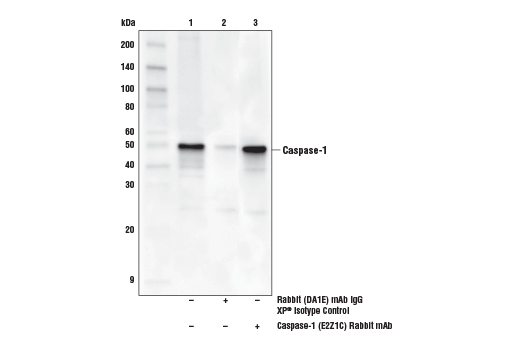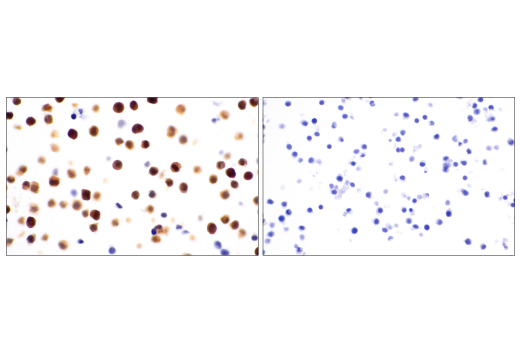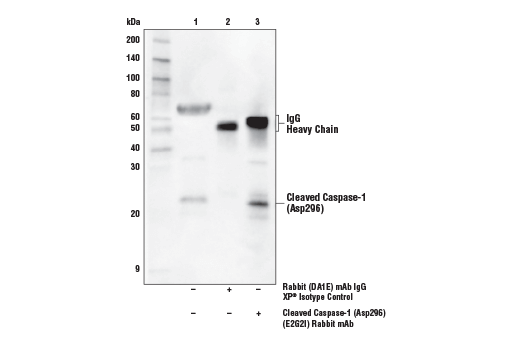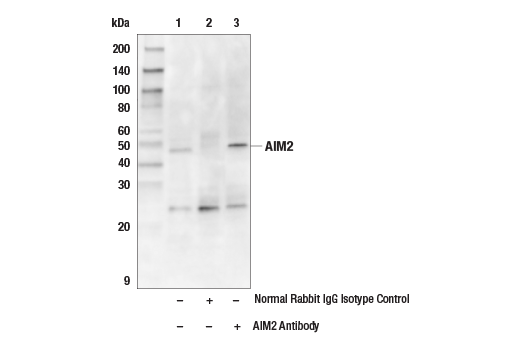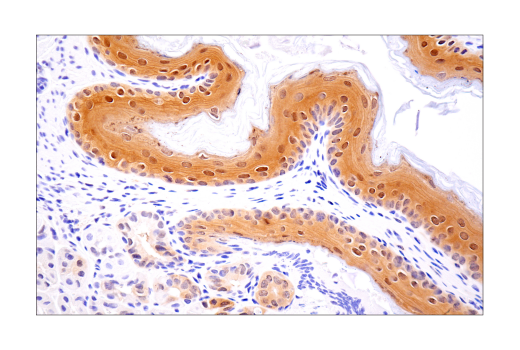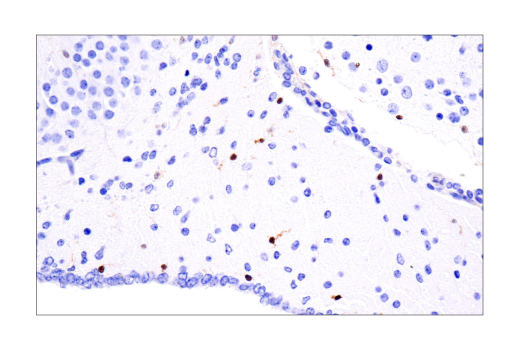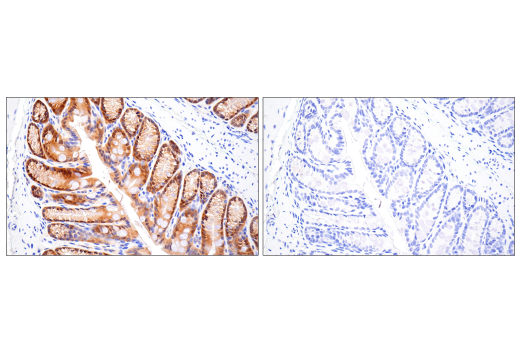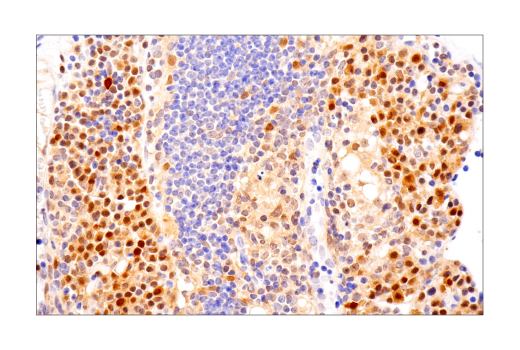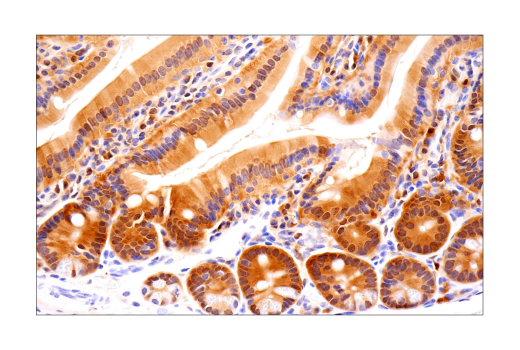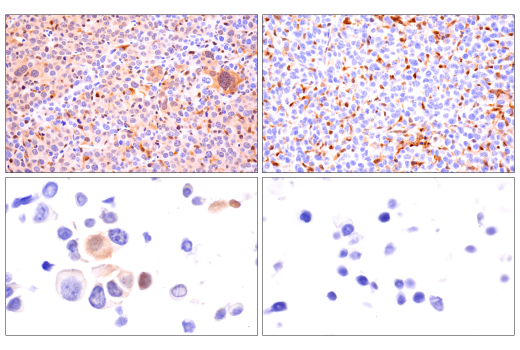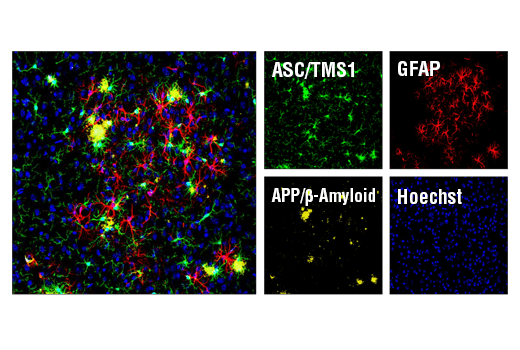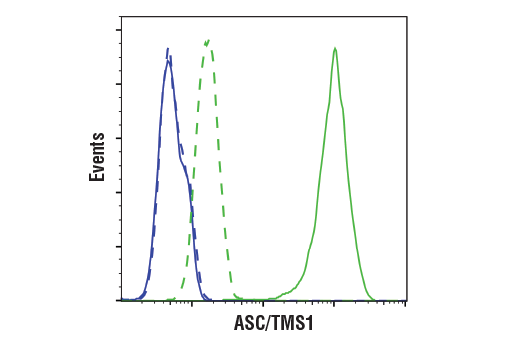| Product Includes | Product # | Quantity | Mol. Wt | Isotype/Source |
|---|---|---|---|---|
| NLRP3 (D4D8T) Rabbit mAb | 15101 | 20 µl | 110 kDa | Rabbit IgG |
| AIM2 Antibody | 63660 | 20 µl | 43 kDa | Rabbit |
| ASC/TMS1 (D2W8U) Rabbit mAb | 67824 | 20 µl | 22 kDa | Rabbit IgG |
| Cleaved-IL-1β (Asp117) (E7V2A) Rabbit mAb | 63124 | 20 µl | 17 kDa | Rabbit IgG |
| IL-1β (D6D6T) Rabbit mAb | 31202 | 20 µl | 17, 31 kDa | Rabbit IgG |
| Cleaved Caspase-1 (Asp296) (E2G2I) Rabbit mAb | 89332 | 20 µl | 22 kDa | Rabbit IgG |
| Caspase-1 (E2Z1C) Rabbit mAb | 24232 | 20 µl | 48, 10 kDa | Rabbit IgG |
| Anti-rabbit IgG, HRP-linked Antibody | 7074 | 100 µl | Goat |
Please visit cellsignal.com for individual component applications, species cross-reactivity, dilutions, protocols, and additional product information.
Description
The Mouse Reactive Inflammasome Antibody Sampler Kit provides an economical means of detecting multiple inflammasome components. The kit includes enough antibodies to perform at least two western blot experiments with each primary antibody.
Storage
Background
The innate immune system works as the first line of defense in protection from pathogenic microbes and host-derived signals of cellular distress. One way in which these “danger” signals trigger inflammation is through activation of inflammasomes, which are multiprotein complexes that assemble in the cytosol after exposure to pathogen-associated molecular patterns (PAMPs) or danger-associated molecular patterns (DAMPs) and result in the activation of caspase-1 and subsequent cleavage of proinflammatory cytokines IL-1β and IL-18 (Reviewed in 1-6). Inflammasome complexes typically consist of a cytosolic pattern recognition receptor (PRR; a nucleotide-binding domain and leucine-rich-repeat [NLR] or AIM2-like receptor [ALR] family member), an adaptor protein (ASC/TMS1), and pro-caspase-1. A number of distinct inflammasome complexes have been identified, each with a unique PRR and activation triggers. The best characterized is the NLRP3 complex, which contains NLRP3, ASC/TMS1, and pro-caspase-1. The NLRP3 inflammasome is activated in a two-step process. First, NF-κB signaling is induced through PAMP- or DAMP-mediated activation of TLR4 or TNFR, resulting in increased expression of NLRP3, pro-IL-1β, and pro-IL-18 (priming step, signal 1). Next, indirect activation of NLRP3 occurs by a multitude of signals (whole pathogens, PAMPs/DAMPs, potassium efflux, lysosomal-damaging environmental factors [uric acid, silica, alum] and endogenous factors [amyloid-β, cholesterol crystals], and mitochondrial damage), leading to complex assembly and activation of caspase-1 (signal 2). The complex inflammasome structure is built via domain interactions among the protein components. Other inflammasomes are activated by more direct means: double-stranded DNA activates the AIM2 complex, anthrax toxin activates NLRP1, and bacterial flagellin activates NLRC4. Activated caspase-1 induces secretion of proinflammatory cytokines IL-1β and -18, but also regulates metabolic enzyme expression, phagosome maturation, vasodilation, and pyroptosis, an inflammatory programmed cell death. Inflammasome signaling contributes to the onset of a number of diseases, including atherosclerosis, type II diabetes, Alzheimer’s disease, and autoimmune disorders.
- Broz, P. and Dixit, V.M. (2016) Nat Rev Immunol 16, 407-20.
- Guo, H. et al. (2015) Nat Med 21, 677-87.
- Jo, E.K. et al. (2016) Cell Mol Immunol 13, 148-59.
- Rathinam, V.A. and Fitzgerald, K.A. (2016) Cell 165, 792-800.
- Shao, B.Z. et al. (2015) Front Pharmacol 6, 262.
- Schroder, K. and Tschopp, J. (2010) Cell 140, 821-32.
Background References
Trademarks and Patents
使用に関する制限
法的な権限を与えられたCSTの担当者が署名した書面によって別途明示的に合意された場合を除き、 CST、その関連会社または代理店が提供する製品には以下の条件が適用されます。お客様が定める条件でここに定められた条件に含まれるものを超えるもの、 または、ここに定められた条件と異なるものは、法的な権限を与えられたCSTの担当者が別途書面にて受諾した場合を除き、拒絶され、 いかなる効力も効果も有しません。
研究専用 (For Research Use Only) またはこれに類似する表示がされた製品は、 いかなる目的についても FDA または外国もしくは国内のその他の規制機関により承認、認可または許可を受けていません。 お客様は製品を診断もしくは治療目的で使用してはならず、また、製品に表示された内容に違反する方法で使用してはなりません。 CST が販売または使用許諾する製品は、エンドユーザーであるお客様に対し、使途を研究および開発のみに限定して提供されるものです。 診断、予防もしくは治療目的で製品を使用することまたは製品を再販売 (単独であるか他の製品等の一部であるかを問いません) もしくはその他の商業的利用の目的で購入することについては、CST から別途許諾を得る必要があります。 お客様は以下の事項を遵守しなければなりません。(a) CST の製品 (単独であるか他の資材と一緒であるかを問いません) を販売、使用許諾、貸与、寄付もしくはその他の態様で第三者に譲渡したり使用させたりしてはなりません。また、商用の製品を製造するために CST の製品を使用してはなりません。(b) 複製、改変、リバースエンジニアリング、逆コンパイル、 分解または他の方法により製品の構造または技術を解明しようとしてはなりません。また、 CST の製品またはサービスと競合する製品またはサービスを開発する目的で CST の製品を使用してはなりません。(c) CST の製品の商標、商号、ロゴ、特許または著作権に関する通知または表示を除去したり改変したりしてはなりません。(d) CST の製品をCST 製品販売条件(CST’s Product Terms of Sale) および該当する書面のみに従って使用しなければなりません。(e) CST の製品に関連してお客様が使用する第三者の製品またはサービスに関する使用許諾条件、 サービス提供条件またはこれに類する合意事項を遵守しなければなりません。
